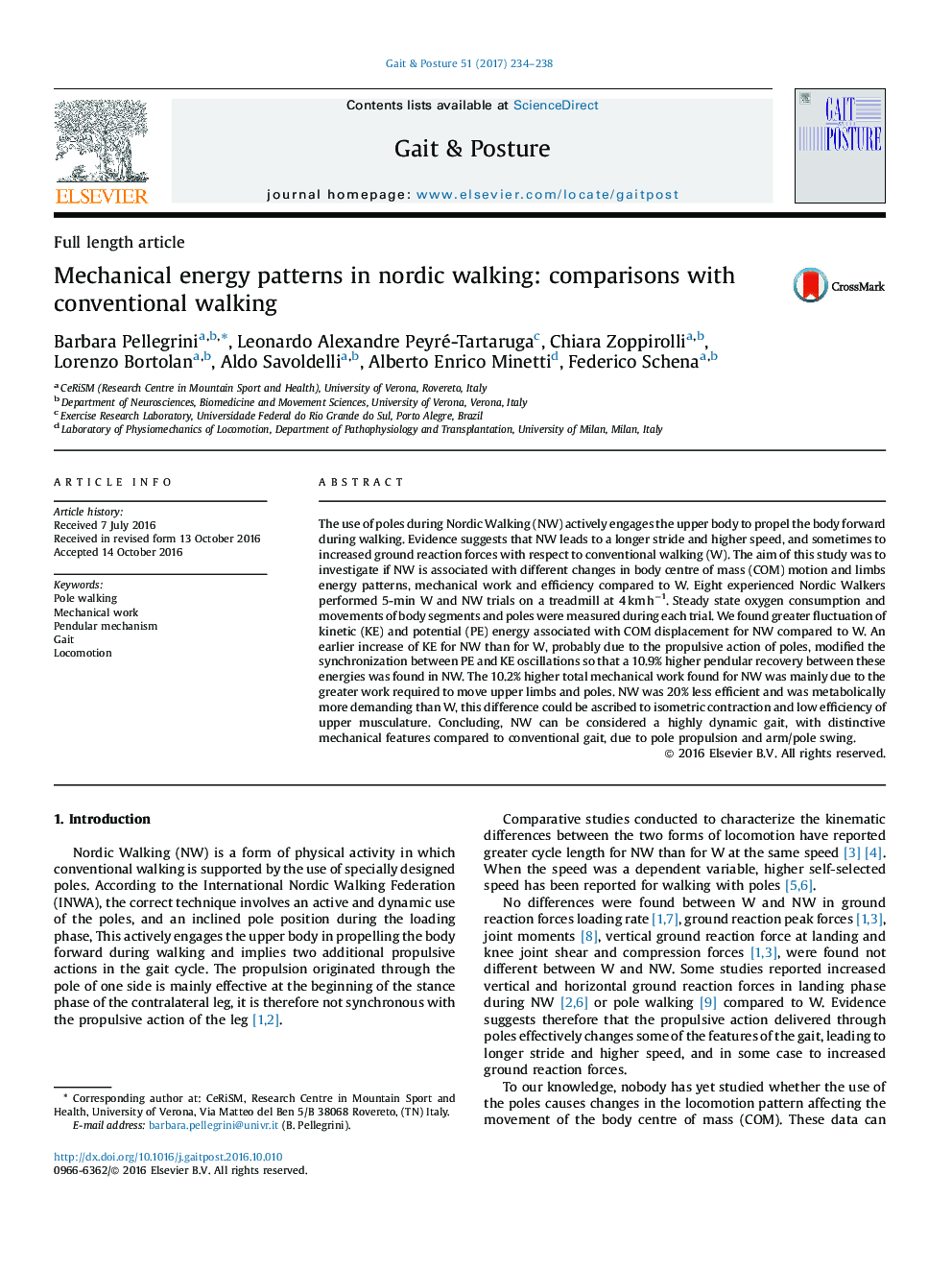| Article ID | Journal | Published Year | Pages | File Type |
|---|---|---|---|---|
| 8798723 | Gait & Posture | 2017 | 5 Pages |
Abstract
The use of poles during Nordic Walking (NW) actively engages the upper body to propel the body forward during walking. Evidence suggests that NW leads to a longer stride and higher speed, and sometimes to increased ground reaction forces with respect to conventional walking (W). The aim of this study was to investigate if NW is associated with different changes in body centre of mass (COM) motion and limbs energy patterns, mechanical work and efficiency compared to W. Eight experienced Nordic Walkers performed 5-min W and NW trials on a treadmill at 4 km hâ1. Steady state oxygen consumption and movements of body segments and poles were measured during each trial. We found greater fluctuation of kinetic (KE) and potential (PE) energy associated with COM displacement for NW compared to W. An earlier increase of KE for NW than for W, probably due to the propulsive action of poles, modified the synchronization between PE and KE oscillations so that a 10.9% higher pendular recovery between these energies was found in NW. The 10.2% higher total mechanical work found for NW was mainly due to the greater work required to move upper limbs and poles. NW was 20% less efficient and was metabolically more demanding than W, this difference could be ascribed to isometric contraction and low efficiency of upper musculature. Concluding, NW can be considered a highly dynamic gait, with distinctive mechanical features compared to conventional gait, due to pole propulsion and arm/pole swing.
Keywords
Related Topics
Health Sciences
Medicine and Dentistry
Orthopedics, Sports Medicine and Rehabilitation
Authors
Barbara Pellegrini, Leonardo Alexandre Peyré-Tartaruga, Chiara Zoppirolli, Lorenzo Bortolan, Aldo Savoldelli, Alberto Enrico Minetti, Federico Schena,
